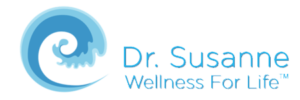 The YMCA has been in existence since 1901. In fact the founders even held meetings in the cafeteria of Santa Monica High School in the late 1920’s! The popular youth center is a testament to friendship and faith in the community, giving young members a place to turn to through troubled times over the years, like the Great Depression. Since then it has expanded to many cities across the country, and has wonderful activities for the whole family to partake in.
The YMCA has been in existence since 1901. In fact the founders even held meetings in the cafeteria of Santa Monica High School in the late 1920’s! The popular youth center is a testament to friendship and faith in the community, giving young members a place to turn to through troubled times over the years, like the Great Depression. Since then it has expanded to many cities across the country, and has wonderful activities for the whole family to partake in.
I mention the YMCA because not only do they have wonderful fitness activities, but their pool is ozonated rather than chlorinated. Chlorine has been associated with a number of damaging characteristics to the body including lung damage, bladder cancer, miscarriages, and still births. Ozonated pools however, are a great alternative. They have detoxifying effects on the water and are much cleaner, as grease, dirt, and body oils end up getting filtered out far faster than in chlorinated pools. Unlike chlorine, ozonated water systems do not adversely affect the skin and hair, nor does it have any harmful health or environmental effects.
The Santa Monica Family YMCA located on 6th street has a full-fledged Aquatic Center, where both the pool and spa contain ozonated water systems. They have very flexible schedules for swimming lessons for both children and adults, and of course, their 25-yard, 6 lane pool is heated for your convenience. It is a great place to go if swimming is your first workout choice. You can go as many times a week as you want without having to worry about chemicals seeping into your skin!
Santa Monica Family YMCA
1332 6th Street
Santa Monica, CA 90401
Phone:
(310) 393-2721
Fax:
(310) 451-9906
References:














